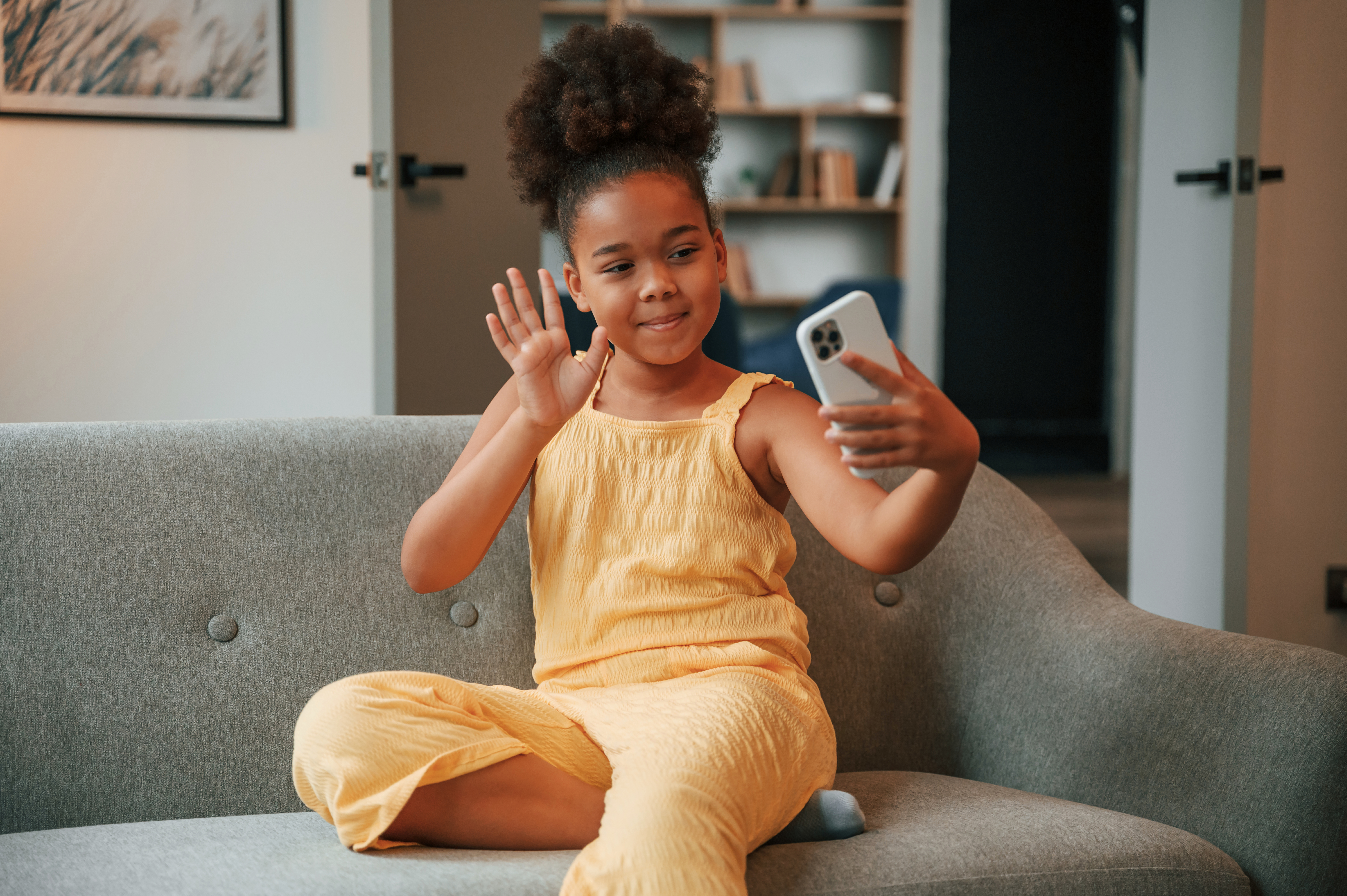
For today’s generation, TikTok, Instagram, and Snapchat are more than just apps—they’re a central part of social life. While social media allows children and teens to connect with friends, explore interests, and express creativity, it also comes with risks such as cyberbullying, comparison culture, and screen addiction.
Parents are increasingly asking:
- At what age should my child have a phone?
- How can I monitor their online activity without invading privacy?
- How do I help my child navigate online friendships and cyberbullying?
This guide provides parents with practical strategies for managing their child’s social media use, setting healthy digital boundaries, and ensuring that online interactions are safe, positive, and balanced with real-world activities.
At What Age Should My Child Have a Phone?
There is no single "right age" to give a child a phone, as it depends on maturity, responsibility, and family needs. However, experts generally recommend:
Ages 6-9: No Smartphone, Minimal Screen Use
- Children in this age range don’t need a smartphone. If necessary, a basic phone for emergencies may be considered.
- Encourage offline activities, interactive play, and limited supervised screen time.
Ages 10-12: Gradual Introduction with Restrictions
- If a phone is needed, start with a "training phone" that has no internet access or social media.
- Teach basic online safety rules before granting access to messaging apps.
- Use parental controls to limit screen time and app usage.
Ages 13-15: Limited Social Media Access with Supervision
- This is when most children begin asking for social media accounts.
- Require private profiles and set rules for appropriate online behavior.
- Teach about cyberbullying, privacy risks, and avoiding harmful content.
Ages 16+: Gradual Independence
- At this stage, teens should be responsible for managing their own online presence while still having open discussions with parents.
- Continue monitoring without micromanaging, ensuring teens develop healthy tech habits.
Key Tip: Delay social media as long as possible. Studies show that earlier exposure increases risks of anxiety, depression, and addiction (Twenge, 2022).
How to Monitor Your Child’s Online Activity Without Invading Privacy
Many parents struggle to balance online safety with respecting their child’s independence. Here’s how to stay informed without overstepping boundaries:
Set Up Parental Controls
- Use built-in parental controls on iPhones, Android devices, and apps like TikTok and Instagram.
- Limit screen time, restrict certain content, and require approval for app downloads.
Establish a “No Secret Accounts” Rule
- Require your child to only have one account per platform (no hidden or "finsta" accounts).
- Encourage them to share their usernames with you.
Be Involved, But Not Overbearing
- Follow their public accounts but avoid commenting or engaging too much (to prevent embarrassment).
- Regularly check friend lists and messages (with their knowledge, not in secret).
Keep Social Media Use in Public Spaces
- Encourage using devices in common areas rather than alone in their bedroom.
- Implement a “no phones at bedtime” rule to prevent excessive nighttime scrolling.
Encourage Open Communication
Instead of spying, build trust so that your child feels comfortable talking about their online experiences. Try:
- “What’s the funniest thing you saw on TikTok today?”
- “Has anyone ever messaged you in a way that made you uncomfortable?”
- “If you ever see something upsetting online, you can always talk to me about it.”
By making social media a shared experience, kids are more likely to ask for guidance rather than hide their online activity.
How to Help Your Child Navigate Online Friendships and Cyberbullying
Social media creates new social pressures for children and teens, from online drama to cyberbullying. Here’s how to guide them through it:
Teach “Red Flags” for Online Interactions
Help your child recognize:
- Strangers messaging them (especially adults posing as kids).
- Friends pressuring them to send inappropriate pictures.
- Fake giveaways or scams asking for personal information.
Encourage them to block and report anyone making them uncomfortable.
Address Cyberbullying Early
If your child is being bullied online:
- Stay calm and listen—avoid reacting emotionally.
- Document the messages (screenshots) as proof.
- Block and report the bully on the platform.
- Involve the school if the bullying extends to in-person interactions.
If your child is engaging in negative online behavior, have an honest conversation:
- “What made you feel like posting that?”
- “How do you think the other person felt?”
- “How would you feel if someone said that to you?”
Encourage empathy and social responsibility when interacting online.
Limit Comparison Culture
Social media often promotes unrealistic beauty standards and lifestyles, leading to low self-esteem. Encourage your child to:
- Follow accounts that make them feel good, not just influencers with perfect images.
- Understand that many posts are filtered and not real life.
- Take breaks from social media when they feel overwhelmed.
Encourage Real-Life Social Interactions
To prevent social media obsession, children should have a balance between online and offline relationships. Encourage:
- Face-to-face hangouts with friends.
- Participation in sports, clubs, or hobbies.
- Family activities without screens (game nights, outdoor adventures).
By creating a fulfilling offline life, kids rely less on social media for validation.
How to Set Healthy Social Media Rules in Your Home
Rather than banning social media entirely, set clear family guidelines to promote responsible use.
Create a Family Technology Agreement
Outline rules such as:
No phones at the dinner table
One hour of screen-free time before bed
Limit on daily social media use (e.g., 1-2 hours max)
Parents and kids agree to be open about social media activity
Use Social Media as a Teaching Tool
- Watch TikTok or YouTube videos together to discuss content critically.
- Teach kids to fact-check information before believing it.
- Encourage creativity—allow kids to use social media for learning, hobbies, or positive self-expression.
Lead by Example
If parents are always on their phones, kids will mirror that behavior. Model healthy screen habits by:
- Taking breaks from social media yourself.
- Prioritizing face-to-face conversations over screen time.
- Not using your phone excessively during family time.
Social media isn’t inherently bad, but unrestricted, unmonitored use can be harmful. The goal is not to eliminate social media, but to teach kids how to use it responsibly.
By delaying social media exposure, setting boundaries, and fostering open communication, parents can help their children build a healthy relationship with technology—one that enhances their lives rather than controls them.
If you ever feel that your child’s social media use is affecting their mental health, sleep, or real-world relationships, it may be time to intervene more actively or seek professional guidance.
References
- Twenge, J. M. (2022). Generational Differences in Technology Use and Mental Health. Journal of Adolescent Psychology.
- American Academy of Pediatrics (AAP). (2023). Screen Time and Social Media Guidelines for Children.
- Pew Research Center (2023). Teen Social Media Trends and Online Behavior.










